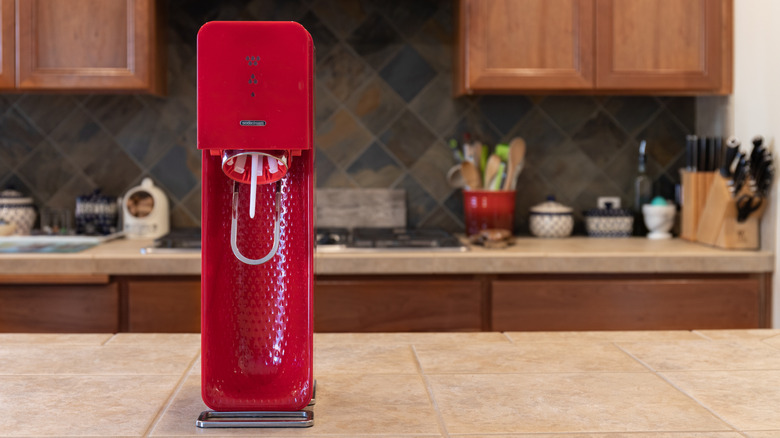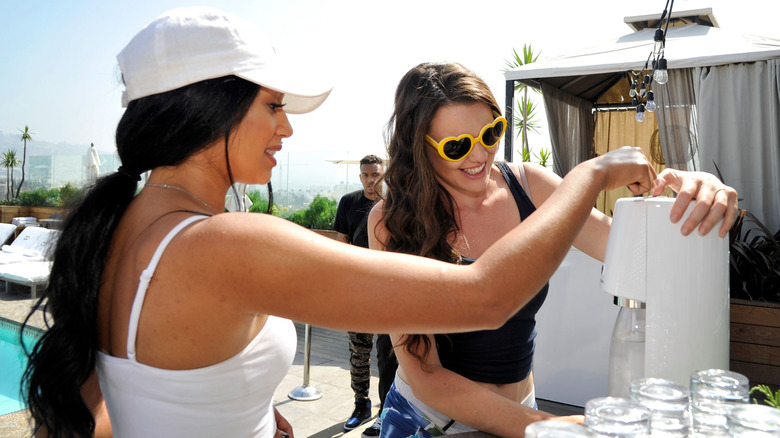The Easiest Way To Get More Refills (And Save Money) With Your Soda Maker
We may receive a commission on purchases made from links.
If your love of soda has made the thought of sipping on plain water a painful one, then you likely live in fear of your beloved soda maker running out of gas. Of course, it's a good idea to keep a spare canister or two for whenever that happens, but the cost of those little cans of compressed CO2 keeps adding up, to say nothing of how quickly they seem to empty. Fortunately, there's an easy and cost-effective solution to that — simply get a bigger, third-party CO2 cylinder and hook it up to your machine.
If you don't have to worry about the cost of frequent cylinder changes, there's a lot more you can do with your soda maker. From making sparkling wine using a Soda Stream to using the appliance to keep salad greens fresh, you'll be surprised by the versatility. However, some actions, like using the machine to carbonate anything other than water and even attaching third-party accessories, like an adaptor hose, may void the warranty. It's up to you how adventurous you want to get.
Aesthetics are important, and most modern soda makers look sleek. Therefore, while sourcing a 20-gallon tank and installing it are relatively easy, you also have to integrate the large tank into your space. Fortunately, you'll rarely have to change it, and buying a long 5-foot soda machine adapter hose can help you come up with creative solutions to keep that cylinder out of sight.
Connecting your soda maker to a large CO2 tank
A 20-gallon gas canister won't turn your home soda machine into a commercial fountain soda setup, but many users say that it does make their homemade soda taste brighter. All you need to get started is a CO2 cylinder from a local compressed gas supplier. There are several cylinder sizes available, but even a relatively small 20-gallon tank will last most users more than a year, saving you money on refills. It's also important to check that the adapter hose is compatible with your particular soda machine.
Make sure that the cylinder's valve is closed, and connect the metal end of the adapter cable to it. Next, attach the plastic end of the hose to your soda maker where you'd usually connect the small CO2 canister. At this point, it's a good idea to check for leaks. With the valve still closed, insert a bottle of water into the soda maker and check for bubbles. There should be none since the cylinder's valve is still closed. Now, open the cylinder valve and try carbonating the water at different carbonation settings on your soda maker. Be sure to use a fresh batch of water for testing every setting to avoid over-carbonation, and hold off from tasting the first few batches of test water to let the adapter hose clear any residue that may be inside.
After the first few tests, you can start using your soda maker normally. You only need to open the cylinder valve while the soda maker is in use.

